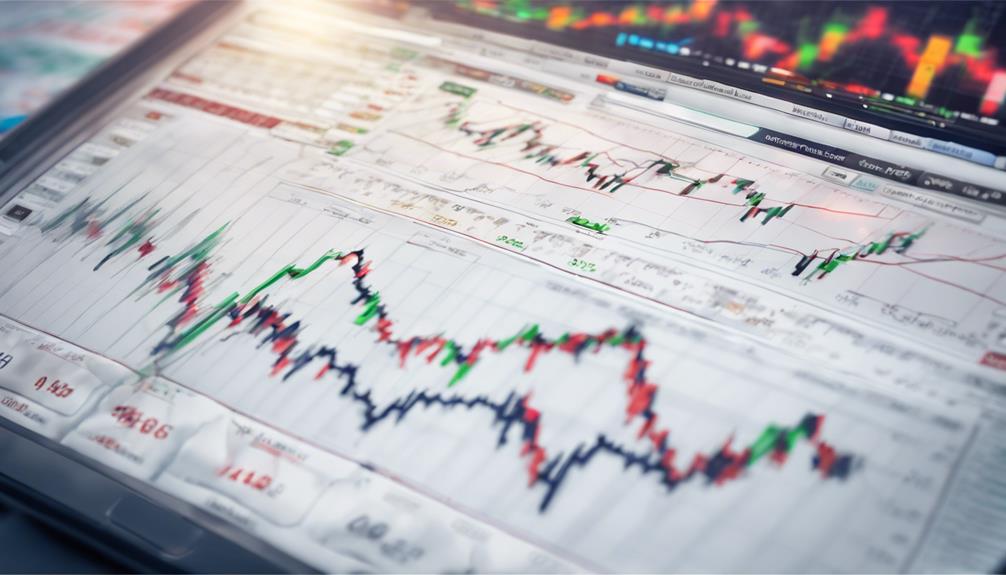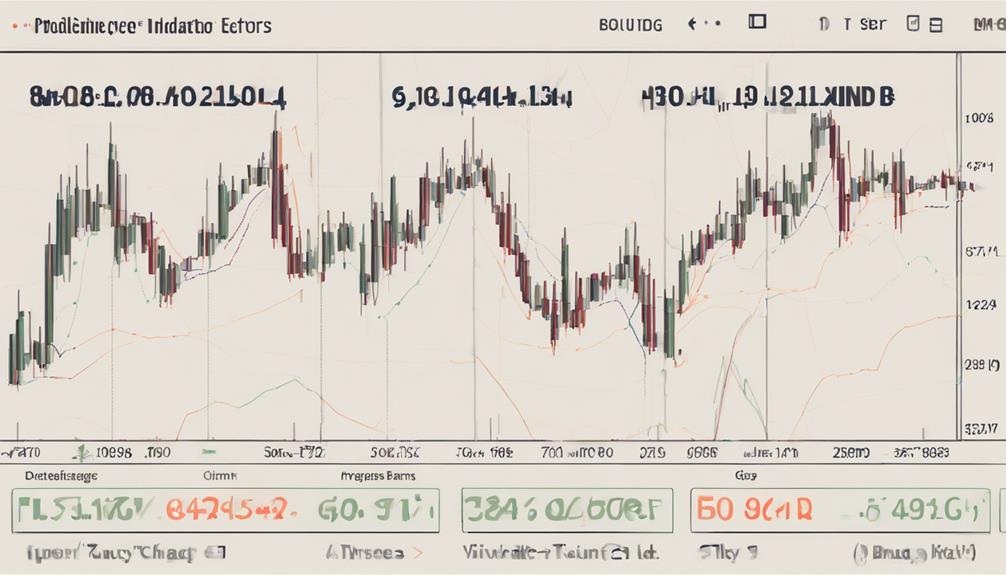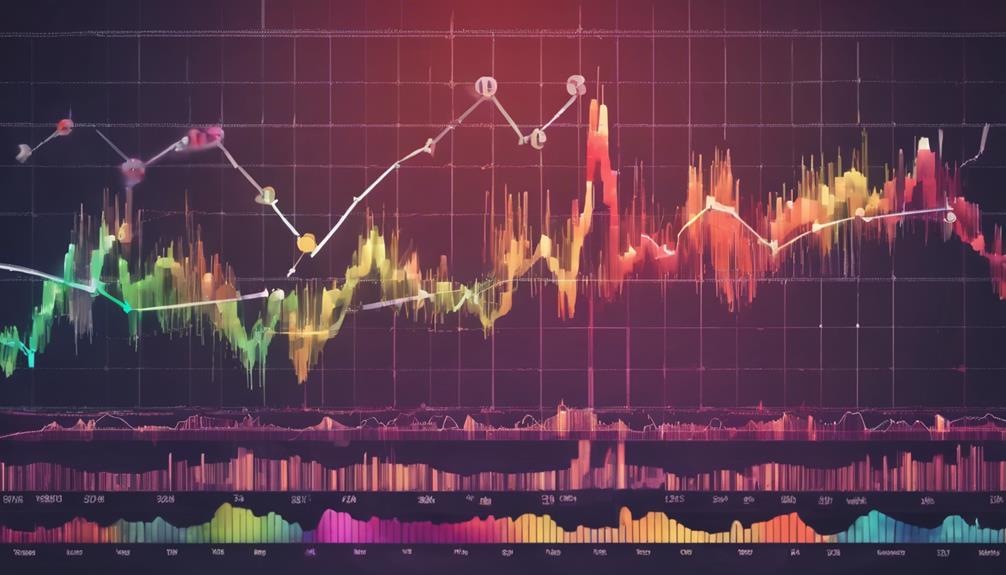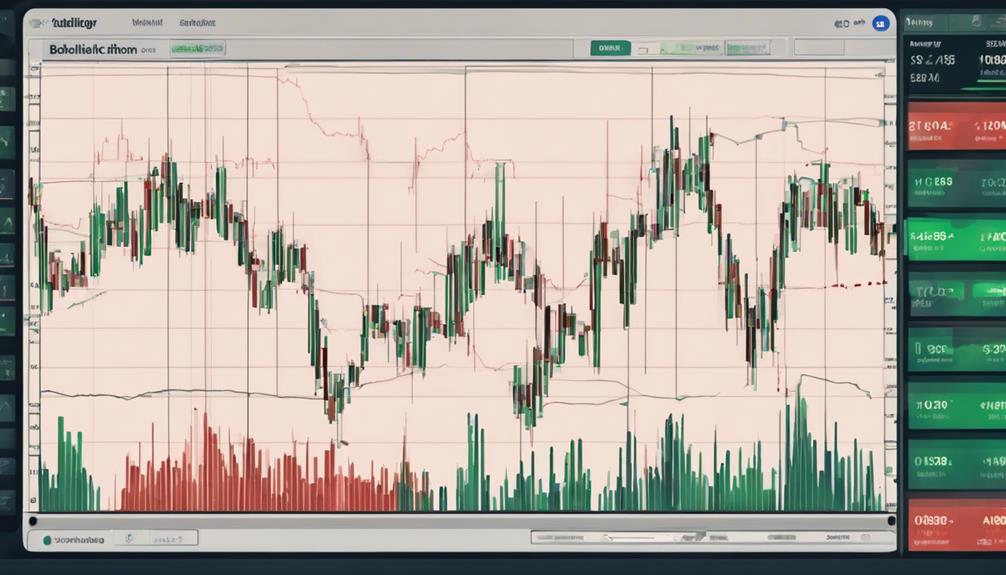Volatility indicators serve as essential tools in stock trading due to their ability to provide traders with crucial information on market dynamics. By analyzing volatility, traders can assess the level of uncertainty and potential risks present in the market, guiding them in making well-informed decisions.
These indicators offer a glimpse into the behavior of stock prices, aiding traders in identifying trends and patterns that could influence their trading strategies. Understanding the significance of volatility indicators can significantly impact a trader's ability to navigate the complexities of the stock market successfully.
Importance of Volatility Indicators
The significance of volatility indicators in stock trading lies in their ability to provide traders with crucial insights into market dynamics and risk assessment, enabling informed decision-making and strategic adjustments. Traders rely on these indicators, such as Bollinger Bands, Average True Range (ATR), and Relative Volatility Index (RVI), to gauge the level of price fluctuations within the market.
High volatility indicates rapid and significant price changes, signaling potential opportunities or risks, while low volatility suggests a more stable market environment. By analyzing these indicators, traders can better understand the current market conditions, anticipate potential price movements, and identify optimal entry and exit points for their trades.
Additionally, volatility indicators play a vital role in enhancing market analysis and stock selection processes, allowing traders to make more informed decisions based on the prevailing market volatility levels. Ultimately, mastering the interpretation of volatility indicators is a key aspect of successful stock trading strategies.
Benefits of Using Volatility Indicators

Utilizing volatility indicators in stock trading empowers traders to assess market dynamics and make informed decisions based on risk assessment and strategic adjustments. Volatility indicators such as Average True Range (ATR), Standard Deviation, Bollinger Bands, Volatility Index (RVI), Chaikin Volatility Indicator, Relative Volatility Index, Keltner channel, and Historical Volatility offer various benefits.
These indicators help traders identify potential market reversals or breakouts, providing insights into market sentiment and aiding in anticipating price movements. By incorporating volatility indicators, traders can establish appropriate stop-loss levels for effective risk management and enhance their trade entry and exit timing for improved performance.
Monitoring the VIX value and utilizing tools like Trade Volatility can further assist traders in adapting their strategies to the prevailing market conditions. Overall, the use of volatility indicators equips traders with valuable information to navigate the stock market with greater precision and confidence.
Application of Volatility Indicators

When implementing volatility indicators in stock trading, traders gain crucial insights into market dynamics and price movements, enabling strategic adjustments to manage risk effectively and make informed decisions.
Volatility indicators such as the Average True Range (ATR), Bollinger Bands, and moving averages play a vital role in assessing market risk by measuring the intensity of price fluctuations. These indicators help traders identify optimal entry and exit points, guiding them in timing their trades more effectively.
By incorporating volatility indicators into their trading strategies, investors can enhance their risk management practices and improve overall trading performance. Understanding how to interpret and apply these indicators can lead to more informed decision-making, ultimately increasing the potential for profitability in the stock market.
Therefore, the application of volatility indicators is essential for traders looking to navigate the complexities of the financial markets successfully.
Impact of Volatility Indicators on Trading

An integral aspect of successful stock trading involves understanding the impact of volatility indicators on market behavior and trading strategies. Volatility indicators play a crucial role in helping traders anticipate and react to potential price movements, especially in times of market uncertainty.
By providing insights into volatility, these indicators assist in effective risk management by enabling traders to set appropriate stop-loss levels. Furthermore, volatility indicators aid in identifying optimal entry and exit points for trades, thus enhancing decision-making processes.
When combined with trend and momentum indicators, volatility indicators contribute to comprehensive market analysis, ultimately improving trading performance. By closely monitoring market trends and utilizing volatility indicators, traders can make informed decisions that align with market conditions, thereby maximizing their chances of success in the dynamic world of stock trading.
Maximizing Profits With Volatility Indicators

In the realm of stock trading, the strategic use of volatility indicators is pivotal for maximizing profits and optimizing trading outcomes. Volatility indicators such as Average True Range (ATR) and Standard Deviation play a crucial role in helping traders navigate the fluctuations in the market. Here's how traders can maximize profits with volatility indicators:
- Identifying High and Low Volatility: Volatility indicators assist in recognizing periods of lower volatility, indicating potential consolidation or ranging markets, and higher volatility, signaling possible breakout or trend reversal opportunities.
- Optimizing Entry and Exit Points: By analyzing volatility indicators, traders can determine optimal entry and exit points based on the expected price movement. This enables traders to capitalize on profitable opportunities while managing risks effectively.
- Enhancing Technical Analysis: Incorporating volatility indicators into technical analysis enhances market performance evaluation and aids in making well-informed trading decisions. By leveraging these indicators, traders can adapt their strategies to changing market conditions, ultimately maximizing their profit potential.
How Do Volatility Indicators Help with Risk Management in Stock Trading?
Volatility indicators for risk management play a crucial role in stock trading. By measuring the magnitude of price fluctuations, these indicators help traders assess market uncertainty and potential risk. With this valuable information, traders can make informed decisions and implement strategies to mitigate potential losses.
Frequently Asked Questions
Why Is Volatility Important in Trading?
Volatility is crucial in trading as it directly impacts price movements and market sentiment. Understanding volatility levels allows traders to manage risk effectively, adjust strategies accordingly, and anticipate market behavior for informed decision-making.
What Is a Volatility Indicator of a Stock?
A volatility indicator of a stock gauges the level of price fluctuations and market volatility associated with that specific stock. It aids traders in evaluating risk, identifying uncertainty, and making informed decisions based on price movements.
What Is the Importance of Volatility Index?
The importance of the volatility index lies in its ability to gauge market expectations of near-term volatility, reflecting investor sentiment and risk perception. Traders utilize the VIX to anticipate market reversals, corrections, and adjust strategies during volatile periods.
How Does Volatility Affect the Stock Market?
Volatility in the stock market can lead to rapid price fluctuations, impacting investor sentiment and trading decisions. For instance, increased volatility may deter risk-averse investors, while attracting speculators seeking profit from price swings.
Conclusion
In conclusion, the significance of volatility indicators in stock trading cannot be overstated. By utilizing these tools effectively, traders can enhance their decision-making process, manage risk levels, and maximize profits.
The application of volatility indicators provides valuable insights into market fluctuations, enabling traders to navigate the stock market with precision and confidence. Incorporating multiple volatility indicators in trading strategies can lead to a comprehensive understanding of market conditions, ultimately leading to optimized trading performance.
